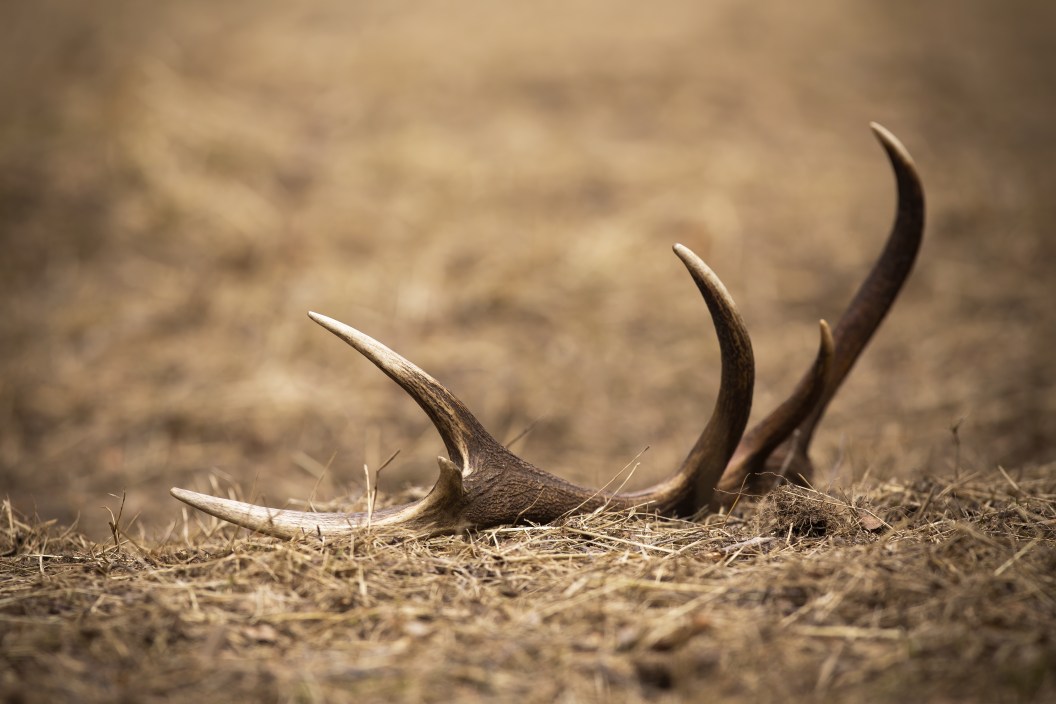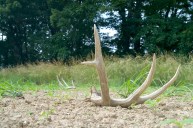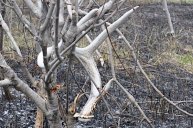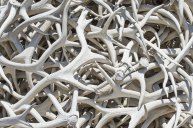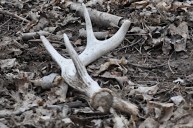Shed hunting—the sport of gathering antlers deer, moose, and other animals have naturally shed in the winter—has long been a favorite off-season pastime of hunters, myself included. Over the past few years, it's exploded in popularity. And it's easy to see why: Shed hunting is a great way to spend time outdoors in beautiful spring weather, it lets you tangentially interact with wildlife without requiring as much knowledge as hunting, and it can be fun for the whole family to get into.
But as shed hunting has grown in popularity (which has been in direct correlation with the financial incentive for antlers), we've started to see more people breaking laws to gather, more states putting forth new regulations, and more vulnerable big game species affected by the activity in their woods.
It's clear that shed hunting can create undue burdens on big game species—and on wildlife as a whole, for that matter. But as stewards of the outdoors, we have an obligation to be conservationists, at least to some degree. And shed hunting can actually make a huge difference in that effort, especially when you consider everyone from big game hunters to novice outdoorsmen can pitch in.
There are laws around shed hunting for a reason, namely to minimize the impact on wildlife. But there are also a lot of unwritten rules—best practices, if you will—around how you can further respect and protect both wildlife and yourself while you're out shed hunting, and how you can help make sure the pastime is available for decades to come.
I've been shed hunting for years where I live in the Midwest, and I want more people to enjoy the sport and act as conservationists through the activity. So, I tapped some friends all around the country who also love shed hunting, and together we've developed this guide of simple "Dos and Don'ts" when looking for shed antlers.
How Shed Hunting Affects Big Game
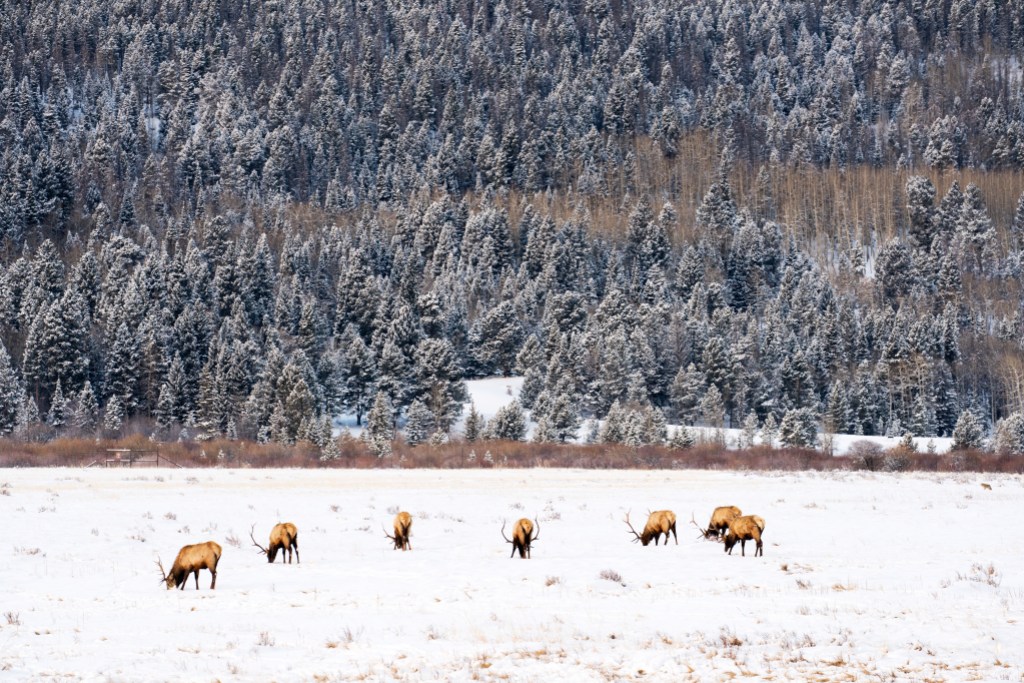
Before you head out, it's important to understand how the simple act of you collecting fallen shed antlers can negatively affect wildlife.
Late winter and early spring are an incredibly difficult time for big game animals, especially mule deer, elk, and pronghorn antelope. They're coming off winter where food was scarce and into spring where food can still be extremely difficult to find. Thus, they must live off the dwindling fat reserves they have built up from the previous fall (and been burning through all winter).
If the animals were left alone, they'd generally be fine. But when hunters and outdoorsmen come into their area looking for sheds, it puts unnecessary stress and pressure on these animals, as their survival instincts tell them to steer clear of human-trafficked woods and plains. As a result, they not only can't hunt what little food there may be in the spring, but the stress causes them to use more of their fat reserves and leaves them vulnerable to over-exhaustion, hunger, and predators.
Human activity in their woods has such a drastic effect, in fact, that Wyoming just announced an unprecedented delay to the start of the shed hunting season by two weeks (now May 15) because their big game animals have had a detrimental winter and are even more vulnerable than normal. Delaying shed season prevents undue burden on an already-hurting population.
That's why shed hunting regulations about where and when you can search for antlers are super important. Where I live in the Midwest, there is very little regulation around shed hunting because we have healthy deer populations and a lot of privately owned land. But several states in the western United States have cracked down on shed hunting, and they have established regulatory mandates to protect several big game species that are more vulnerable at this time of the year. These types of public land shed hunting regulations were first seen in Western states beginning in 2009 with Wyoming; however, in recent years, more states have been joining in.
How to Shed Hunt Safely, Ethically, and Legally
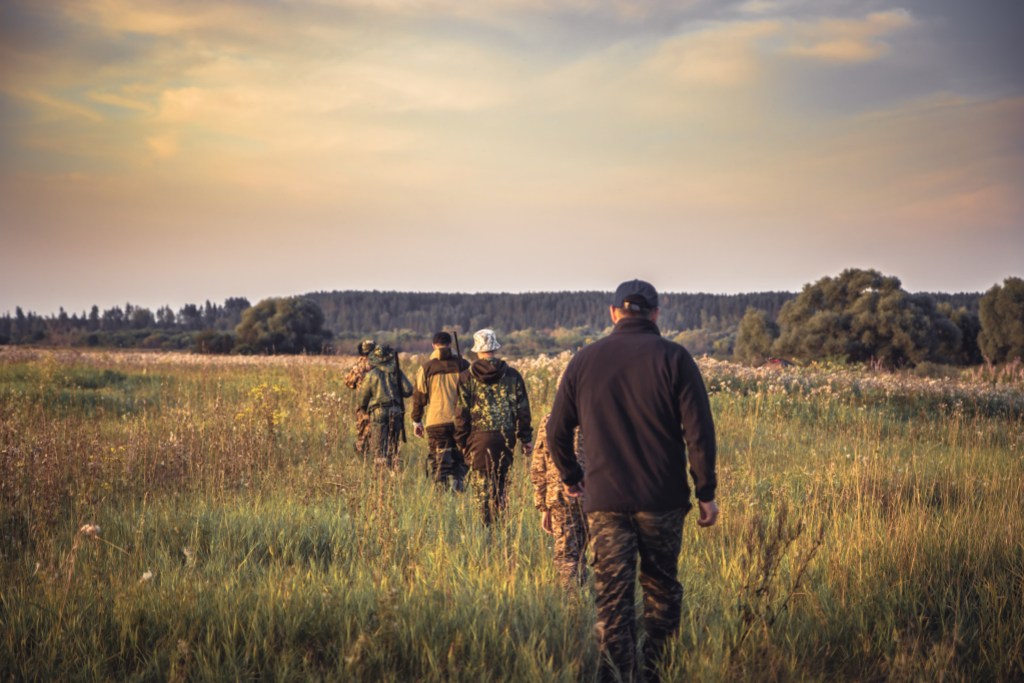
Getty Images, splendens
- Check your season dates. We now understand why respecting the start date of shed hunting season is important to limit the pressure and burden on big game species, but it's also worth noting this date can move year-to-year, as it's done in Wyoming this season. Before you get in your truck or hike to that honey hole you've been eyeing since fall, do a quick Google search and find out what dates the DNR has selected for finding sheds.
- Carry a GPS. Not only will this help you determine how trails intersect and give you better insight into the travel patterns of each species, but it's also a crucial safety measure. When hiking through deep terrain where antler sheds are often dropped, it can be easy to get turned around. Carrying a GPS will ensure that you know the way back and allow you to have a more relaxed—and thus, more fun—experience.
- Know your property lines. In order to pick up sheds on private property, you need permission from the landowner. Moreover, always make sure you aren't crossing onto private property—in Wyoming, there's currently a multi-million dollar lawsuit from a private land owner who said hunters crossed through just his private airspace while corner-crossing between public lands. Mobile apps such as OnX and HuntStand are great ways to determine property boundaries and prevent any trespassing.
- Heed closed signs. Often when out shed hunting, you'll see posted areas and trails that are closed off. This could be for a number of reasons, but sometimes they are closed off as wintering sanctuaries for vulnerable big game herds. Respect these closures by leaving them alone and allowing wildlife to be unbothered.
- Bring a friend. Not only does having friends and family make shed hunting more enjoyable, but it can also add to your success. Having multiple sets of eyes can make finding sheds easier, as well as determining places that might not be smart to enter. Whenever I go shed hunting, I always try to bring a couple of hunting buddies with me.
- Switch up where you go. I try not to hunt the same spot day after day. Searching in different areas can give you a better opportunity to find more sheds and scout for new hunting spots. And it also helps the wildlife out tremendously: Giving certain areas a break can allow deer, elk and antelope to come back to that spot to feed and take shelter. Don't put too much pressure on one given area—you might wear it out.
What Not to Do While You Shed Hunt
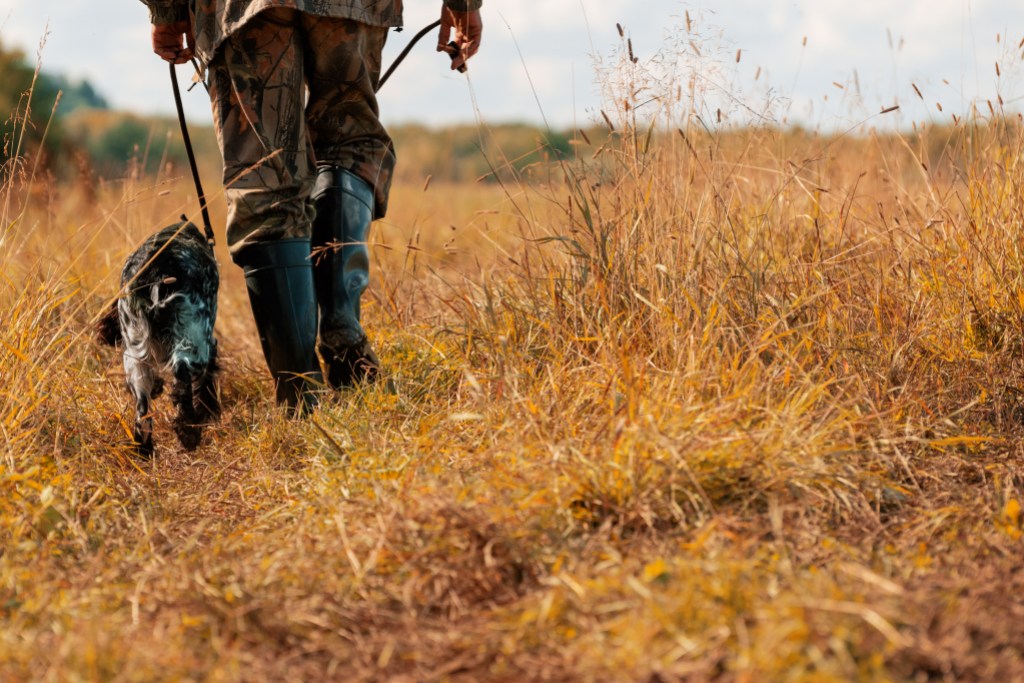
Getty Images, Irina Orlova
- Don't lose control of dogs. Dogs can be a really fun way to add to the shed hunting experience and they can even help locate sheds when properly trained. However, dogs can easily run off and disturb wildlife when not kept under control. I always advise only bringing dogs shed hunting when they are well trained. Keeping a GPS collar on your furry friend is another great way to practice responsible shed hunting.
- Don't take UTVs off the trail. Bringing motorized vehicles with you into the backcountry when looking for sheds can be incredible, but just make sure you follow local guidelines and remain on the marked trails. Traveling by foot is always a better option for limiting pressure on wildlife; however, it's understandable this might not be an option for everybody.
- Don't harass animals. This one might seem obvious, but I see it somewhat frequently. Following big game can seem like a good idea to locate more sheds; however, this puts an extreme amount of stress on animal herds—and at a time when it is most crucial for animals to preserve their energy. Leave the animals alone as much as possible. If you happen to come upon an animal, try to leave the area slowly and undetected.
- Don't go out too early in the season. Even if your state hasn't set specific shed hunting dates, don't jump the gun too early by shed hunting in the late winter. Most of the mortality that has been observed by the DNR is in February and March, and fawn and calf mortality rates are still significantly high in April. Wait until food sources and bedding have become more abundant before you hike into the woods. Your wildlife will be thankful.
- Don't ignore necessary permits. Generally speaking, shed hunting is the act of collecting antlers that have naturally fallen off deer and elk. Grabbing what is called a "dead-head" or cutting off the antlers of a deceased big game animal usually requires some type of permit or tag. It's also helpful to report any dead animals to your DNR, as this can help tremendously with population reports. Before you take something from the woods, make sure you can actually keep it.
- Don't disrespect other shed hunters. You aren't the only hunter in the woods. If you come across other shed hunters, be respectful of their area and limit how close you search near them—unless, of course, they ask you to join. Having too many hunters congregating in a small area can create a great deal of stress on the wildlife, and it's just poor shed hunting etiquette.
